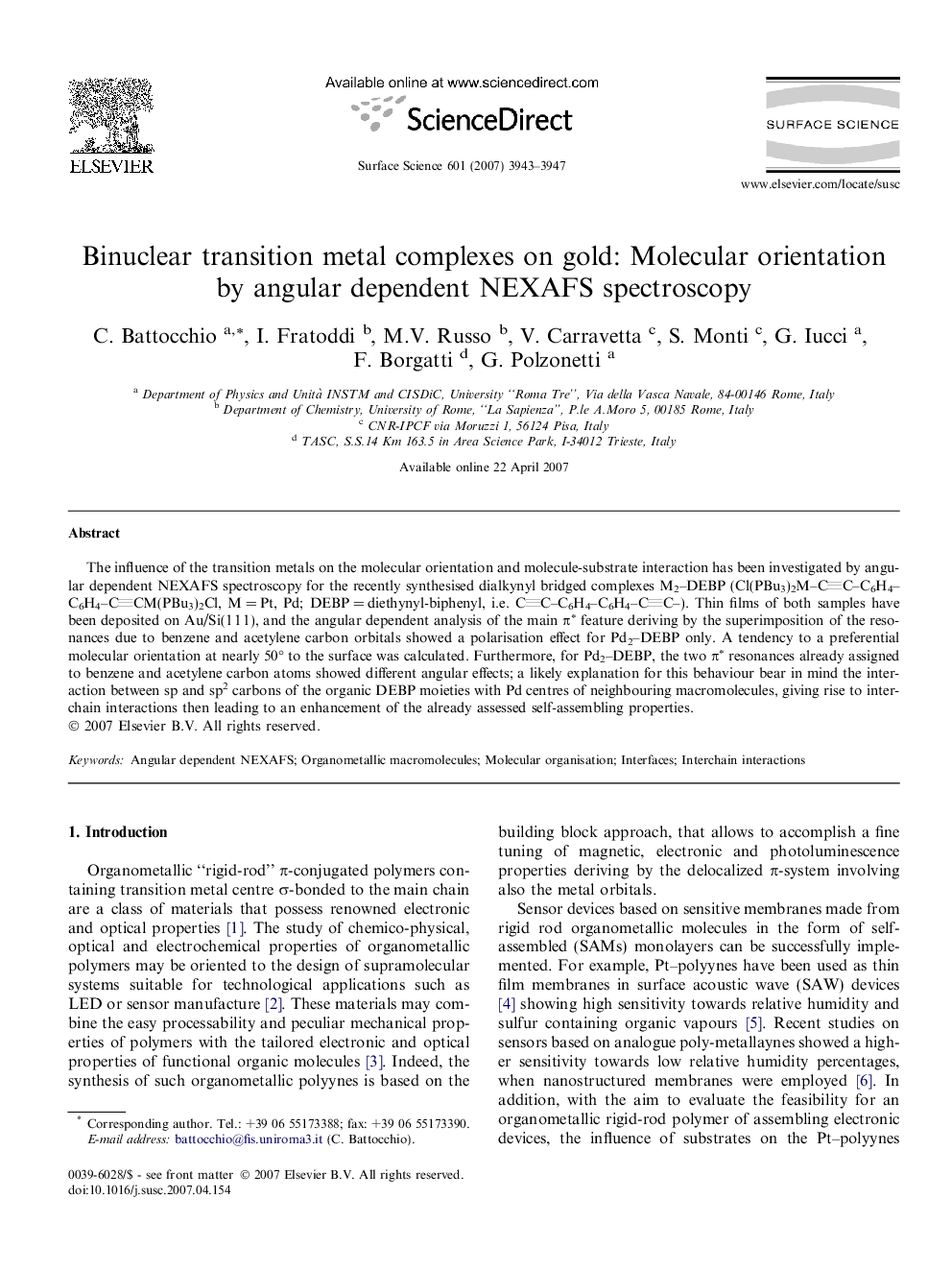| Article ID | Journal | Published Year | Pages | File Type |
|---|---|---|---|---|
| 5426533 | Surface Science | 2007 | 5 Pages |
The influence of the transition metals on the molecular orientation and molecule-substrate interaction has been investigated by angular dependent NEXAFS spectroscopy for the recently synthesised dialkynyl bridged complexes M2-DEBP (Cl(PBu3)2M-CC-C6H4-C6H4-CCM(PBu3)2Cl, M = Pt, Pd; DEBP = diethynyl-biphenyl, i.e. CC-C6H4-C6H4-CC-). Thin films of both samples have been deposited on Au/Si(1 1 1), and the angular dependent analysis of the main Ïâ feature deriving by the superimposition of the resonances due to benzene and acetylene carbon orbitals showed a polarisation effect for Pd2-DEBP only. A tendency to a preferential molecular orientation at nearly 50° to the surface was calculated. Furthermore, for Pd2-DEBP, the two Ïâ resonances already assigned to benzene and acetylene carbon atoms showed different angular effects; a likely explanation for this behaviour bear in mind the interaction between sp and sp2 carbons of the organic DEBP moieties with Pd centres of neighbouring macromolecules, giving rise to interchain interactions then leading to an enhancement of the already assessed self-assembling properties.
